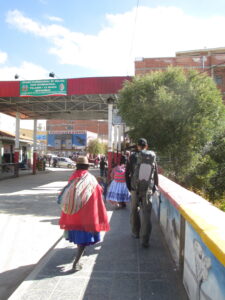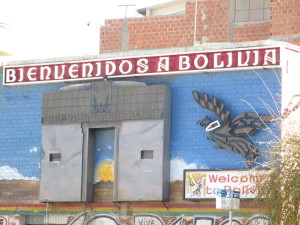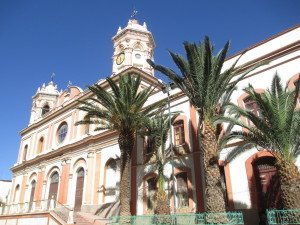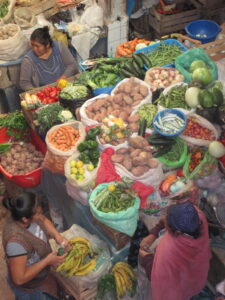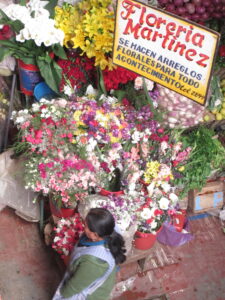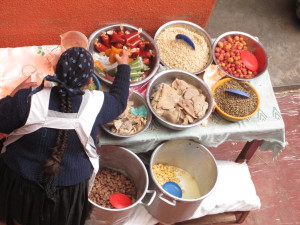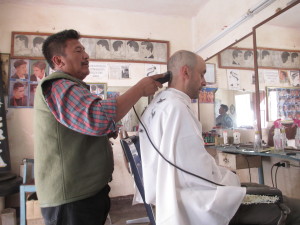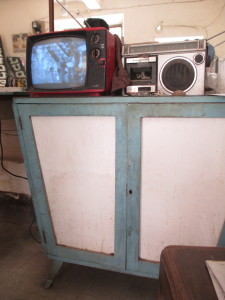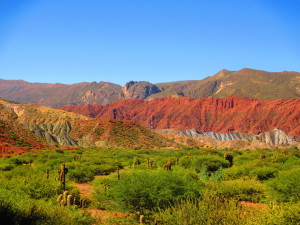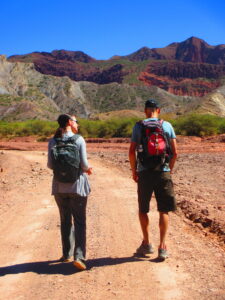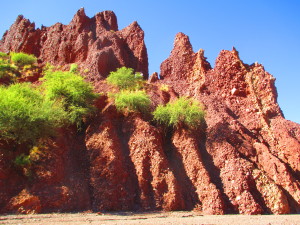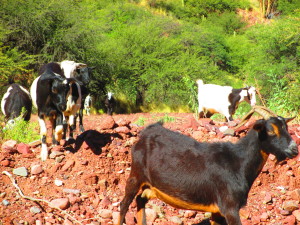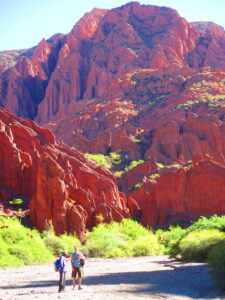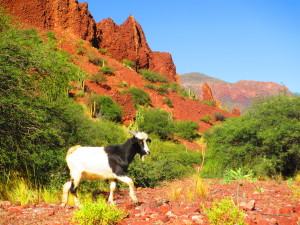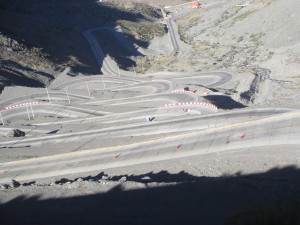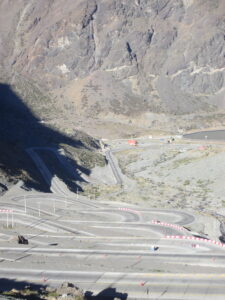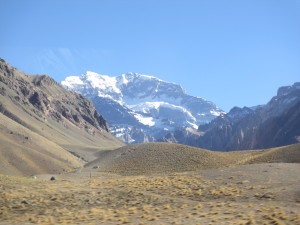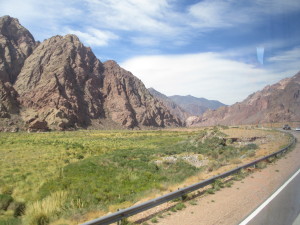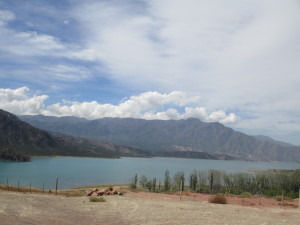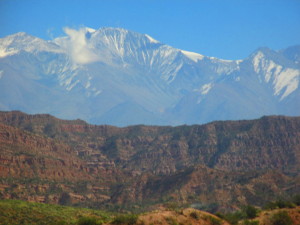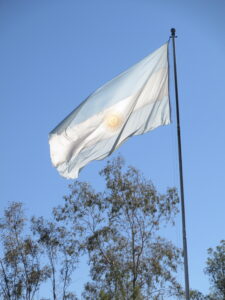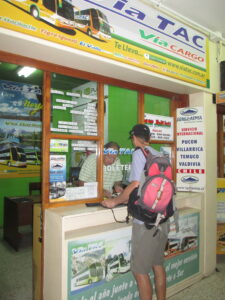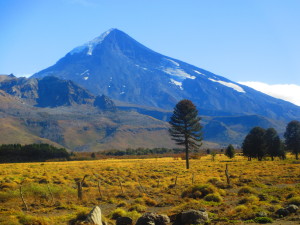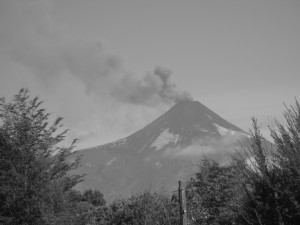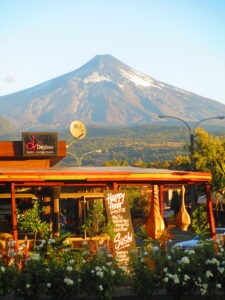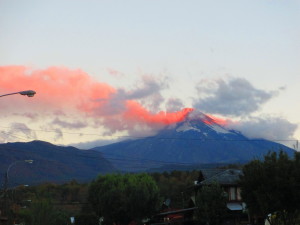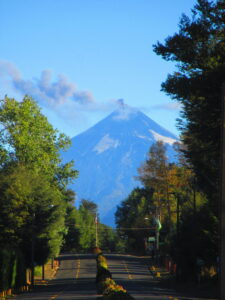We took an early morning three-hour bus ride north from Humahuaca to the Argentinian border town of La Quiaca. We waved goodbye to Argentina and walked across the bridge into Villazon, the Bolivian border town. We read that the border crossing could possibly take hours, so we were thrilled that it only took twenty minutes. We were also pleased that a bribe wasn’t required to obtain our passport stamp.
We walked up a busy commercial street to the bus station, overstimulated by all the merchants and street vendors. I’ve never seen so many North Face down jackets (fake, of course) in one place before. Harry was in his element, bopping into a number of currency exchange shops, looking for the best exchange rate.
Eventually, we bought our tickets, paid the police officer a “tax” (bribe?) to get on the bus, and were soon on our way to Tupiza, elevation 10,000 feet. The road was equal parts steep and windy with phenomenal views as we cut through the mountains. We quickly understood that we were going to be living life quite high up while in Bolivia.
Tupiza
We enjoyed the few days we spent in this sweet little mountain town. Legend has it that Butch Cassidy and the Sundance Kid were taken down by the Bolivian army near Tupiza, ending their notorious string of bank robberies. Several restaurants capitalized on the Wild West theme, which was fitting because Tupiza itself was like a Western movie, Bolivia-style. We loved the colorful markets and ate local food, grateful that Bolivian cuisine has more flavor than the typically bland Argentinian fare ever did. I am a cautious eater, and a vegetarian to boot, but I love it that Harry will eat almost anything. It’s nice to have a travel buddy with adventurous taste buds and a stomach made of steel.
Taking Care of Business
Harry needed a haircut, so I tagged along…. it’s not like I had anything else going on and I was curious to see what a Bolivian barbershop experience would be like. When we entered the salon, it was like walking back in time. The barber was watching a game show on an old TV with rabbit ears, complete with fuzzy lines racing across the screen. I refrained from taking a picture of the poster with half-naked women on the wall circa 1975, but trust me – it was there. The barber was friendly and the three of us chatted in Spanish while he cut Harry’s hair. We obviously had a lot to talk about because we were there long enough for him to shave Harry bald. At least he won’t need a haircut for a while!
What’s the Difference?
As I’ve mentioned before, in Argentina many businesses close between 1:00 – 5:00 PM every day for siesta (nap time). We asked our hostel owner if the same was true in Bolivia, and he rolled his eyes, saying, “No, we’re not like Argentina; we don’t close for a siesta! We do, however, close for lunch from 12:00-2:00”.
Friends Are Fun!
One of the best things that happened in Tupiza was reconnecting with our Canadian friend Lilia, whom we met at Spanish school in Buenos Aires in February. We’ve kept in touch over the past few months, and when we realized that we’d all be in Bolivia within days of one another, we did a happy dance. It was so fun catching up with her and sharing tales of our adventures.
Puerta del Diablo (Devil’s Door)
Lilia and I took a break in the shade to chat while Harry forged ahead to further explore the canyon. Off in the distance, we heard rustling and bleating, and before too long, a bunch of goats crossed our path! In fact, 200 goats walked right by us accompanied by three herding dogs and a goat keeper. It was quite a site to see them come down one side of the mountain, traverse the flat land and cruise on up the side of the next mountain. Later we saw Harry chatting it up with the goat keeper.
Next up: Salar de Uyuni, a Primitive 4-Day Extravaganza
One of the main reasons travelers visit Tupiza is because it’s the gateway to a multi-day tour in southern Bolivia. Culminating at the Salar de Uyuni, the world’s largest salt flat, the journey is supposed to be epic. We coordinated our schedule with Lilia so we could all do this trip together. We were beyond excited to see what this next adventure had in store for us!


